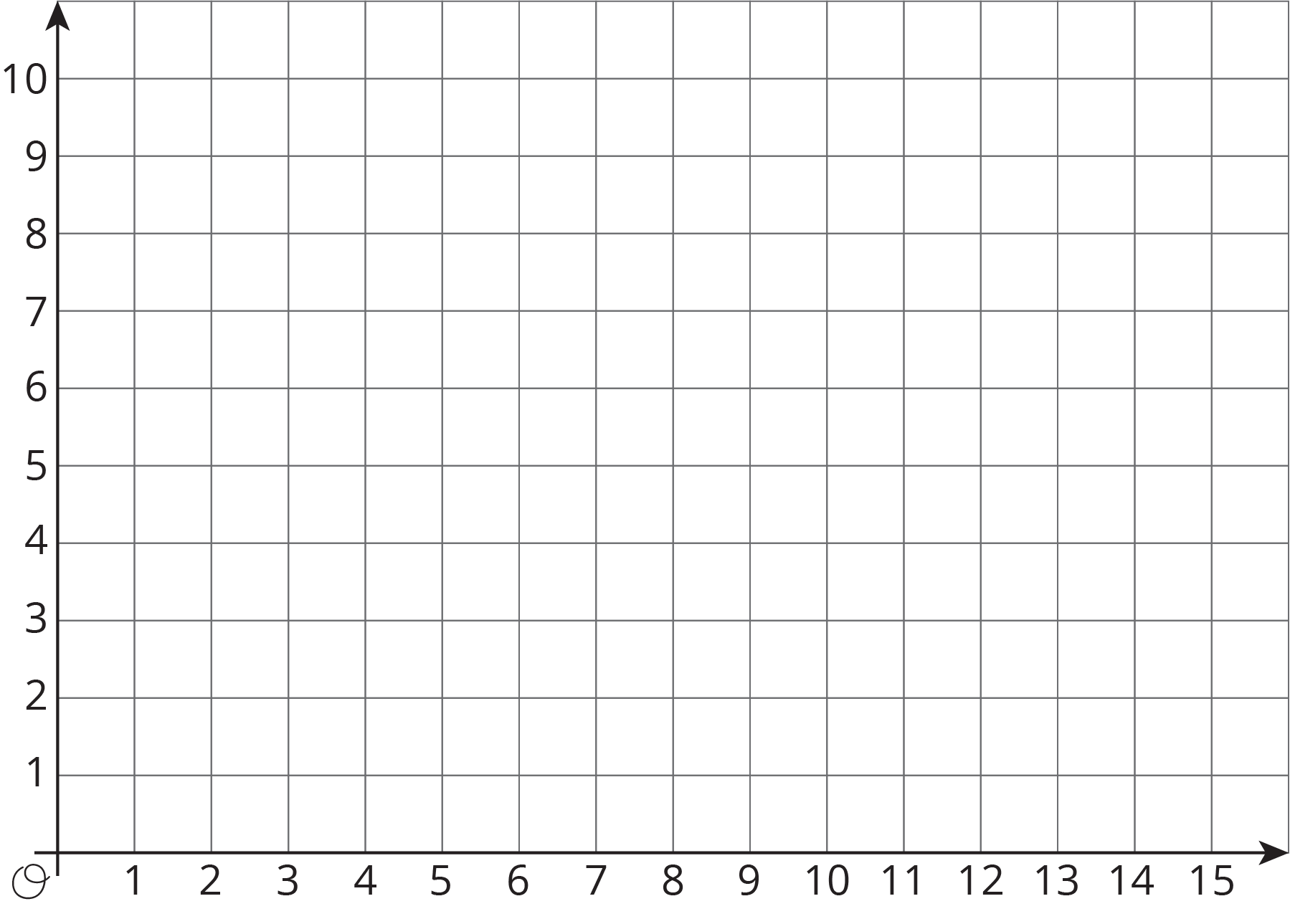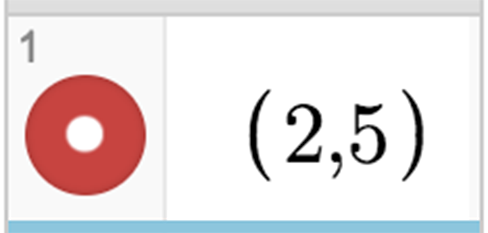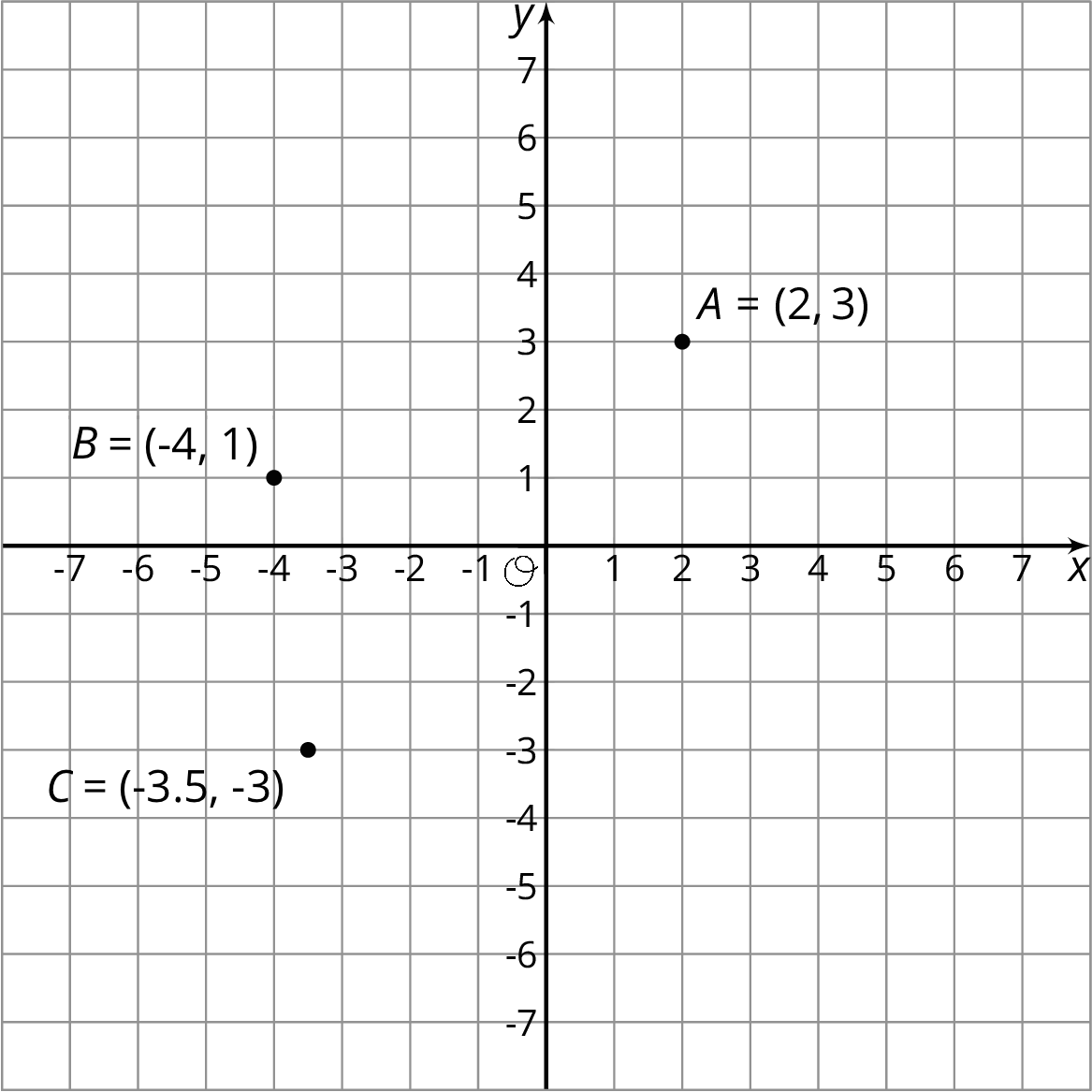11.1: Guess My Line

-
Choose a horizontal or a vertical line on the grid. Draw 4 points on the line and label each point with its coordinates.
-
Tell your partner whether your line is horizontal or vertical, and have your partner guess the locations of your points by naming coordinates.
If a guess is correct, put an X through the point. If your partner guessed a point that is on your line but not the point that you plotted, say, “That point is on my line, but is not one of my points.”
Take turns guessing each other’s points, 3 guesses per turn.





